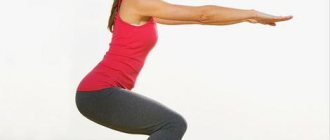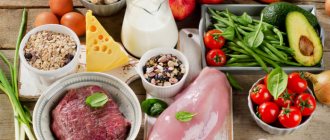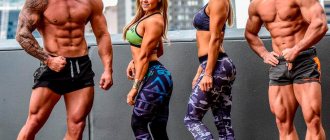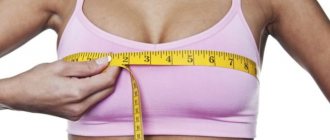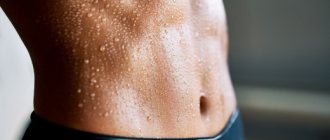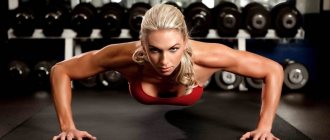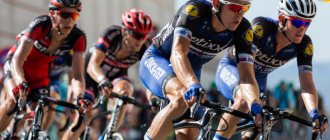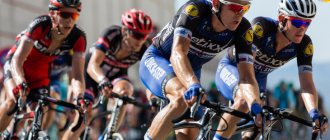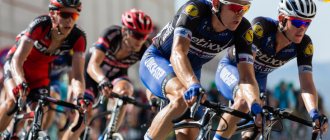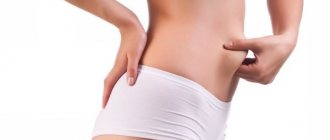When starting to exercise, most beginners want two things at once: burn fat and build muscle. Many commercial products focus on this: fat is removed from problem areas, and muscles grow where there is little volume. It turns out to be a very convenient replacement of fat with muscle. But what does science say? Who can lose fat and build muscle at the same time?
Muscle growth is the formation of new protein in the body. This is the assembly of new molecules from building blocks - amino acids that we get from food. The process occurs in ribosomes - special matrices inside each cell. They glue amino acids together into new molecules in a specific sequence. This sequence is taken from DNA - it is this that provides the “template” according to which everything will be assembled.
The formation of new protein in the body occurs continuously throughout the day. But it also disintegrates during the day. For any person, this protein cycle occurs every day - the old and spent protein disintegrates, the new one is formed in its place. The ratio of protein synthesis and its breakdown gives three options for the development of events ():
- More protein is synthesized than broken down - muscles grow.
- More protein is broken down than synthesized—muscles shrink.
- Protein synthesis is equal to its breakdown - muscles remain in the same amount.
The effect of training on muscle growth
Strength training can lead to muscle growth if you get enough amino acids from your food throughout the day (). And theoretically, these two stimuli for muscle growth - a sufficient amount of protein in food and muscle load - can also be in a calorie deficit.
The effect of calories on muscle growth
A positive energy balance, that is, an excess of calories, is also a stimulus for muscle growth when it goes along with strength training. And this option leads to the most tangible results, because with nutrition the body receives a sufficient amount of both energy and building material.
When it's possible?
And while the body is bad at doing two opposite things at once, there are several situations where fat loss and muscle growth occur at the same time.
Beginners
When people first start training, their strength increases quickly and their muscles respond easily to the load. A beginner’s body easily reacts to even the slightest stimuli, unlike those who have been practicing regularly for a long time and are forced to use all possible and impossible approaches and tricks in order to progress.
Therefore, at first, a beginner can lose weight and gain a little muscle at the same time. Strength training and enough protein can sometimes (but not everyone) be enough, although the effect is very short-lived - a few weeks.
One of the consequences of being overweight is the insensitivity of the body's cells to insulin. When a person begins to regularly train with weights, the sensitivity of muscle cells to insulin improves, and they begin to better accept glucose, because this is the main fuel for work. Fat cells, which were previously overfilled, receive an incentive to get rid of completely “extra” energy. This looks like the process of turning fat into muscle, when a person practically does not change in weight, but becomes slimmer and more prominent.
The slimmer a person becomes, the longer he trains, the more this effect fades away - fat cells are no longer so full that they lose fat easily, and muscles are not so untrained that they respond to any load with growth.
Training after the break
People who used to exercise regularly and were in good shape, but had to take a long break from training, often see themselves getting back into shape much faster than those who train from scratch (). They seem to magically replace fat with muscle.
In fact, muscles remember previous physical training even when they atrophy. A simplified mechanism looks like this:
Each cell of the body has inside itself a nucleus, which contains DNA with genetic information, with the help of which the cell can be copied. Muscle cells are very large and long, they are thousands of times larger than other cells in the body, and in order to maintain their volume (and even more so to increase), they need only one nucleus, which carries genetic information to assemble new proteins.
Research has shown that under the influence of strength training, muscle cells receive new nuclei to make the process faster and more efficient - due to their fusion with dormant, inactive cells, called satellite or stem cells, which are located between muscle fibers.
These cells give their nuclei to the muscles. When muscles atrophy, additional nuclei are not lost anywhere and remain in the cell (,). This way, when you return to training, the extra nuclei are already there and can quickly begin synthesizing new protein for muscle growth. This is why for those who return to training after a break, the muscles grow very quickly - they do not so much grow as return to their previous shape.
Chemists
Anabolic steroids and other drugs allow a person to go beyond the limits of normal physiology and do things that mere mortals can only dream of: gain muscle without fat (or even with fat loss), burn fat without losing muscle, maintain minimal body fat and a lot of muscle all year round. .
Can muscle turn into fat?
Everything is quite simple: muscles are an engine, adipose tissue is a gas tank with fuel. Different organs, different tissues. How to turn one into another? No way.
“Wait,” they will object, “there was once an athlete, a handsome man, with well-developed sculpted muscles. Low fat, fit, athletic. Years passed, the muscles sagged, became flabby, and instead of them there was fat.” Right. The muscles became smaller, and there was more fat on top of them. There is nothing to be surprised about; indeed, muscles atrophy and shrink when not used - they spend less fuel. And if a person eats, as before, in the portions to which he is accustomed, the unspent excess energy replenishes the reserves.
Photo: unsplash.com/@visualsbyroyalz
When they say the muscles are “sagging” or “flabby” - these are just figurative expressions. There are no strings on which the muscles “hang” in order to “sag”. And then there’s nothing to pull them up for. The skin sags under the influence of gravity and the weight of the fat underneath. The appearance of flabby tissue is created. The muscles there, under the saggy folds of fat, are just as toned, only small and weak, and are not visible at all under the layering of tissue.
In order to reverse the situation - to carry out, as they say in fitness, a recomposition of the body - you will have to organize two different, little related processes: reduce the fat component and again try to increase muscle mass. How? There are no secrets here. For muscle growth - training, for reducing fat reserves - eat so much that you constantly lack a little energy for life. The body will have to spend what it has accumulated.
In general, we build muscles in the gym and reduce fat in the kitchen.
What do superheroes eat? Among their favorite foods are not PP dishes
Fat burning and muscle gain for everyone else
Any person who has training experience knows that it is impossible to burn fat and build muscle at the same time. The main problem is that the body of a person with at least some training is poorly able to do these things at the same time.
Over time, the muscles stop responding easily to any load, and all incentives need to be increased - train more, come up with clever training schemes, eat more protein, and just eat more.
Losing weight also ceases to be as easy as at the beginning: there is no longer enough fat in the body, and it is in no hurry to part with its “last” reserves.
And even greater difficulties arise when you want to do both at the same time. This causes a person to mark time: calories are too high for fat loss and too low for muscle growth.
Fat burning and muscle gain require completely different and even mutually exclusive conditions: different hormonal levels, different nutrition, different physiological processes.
Moreover, the conditions that make it possible to gain muscle are the very reason why fat is gained. These are anabolic processes - the conversion of energy received from food into mass, both muscle and fat.
And the opposite situation: the conditions necessary for burning fat are the reason why muscles “burn”. These are catabolic processes where body weight is broken down to produce energy. Trying to do these two things at the same time is like trying to turn a car in both directions at once.
Healthy, tasty and inexpensive - is this possible?
Calculating carbohydrates, proteins and fats for gaining muscle mass is a simple matter, but not everyone can force themselves to cook, and even in such a way that it looks appetizing, is tasty and healthy. The point is a simple lack of time, but there is a way out. Grow Food sports nutrition is a lifesaver for busy people and those who love to eat delicious food. The company's menu includes 5 food lines, where calories and macronutrient ratios are already calculated! You simply choose the appropriate option:
- Power – for those who want to pump up their body;
- Fit – a menu for those who want to lose weight and tone their muscles;
- Daili and Daili+ are ideal for gourmets;
- Balance – menu for keeping fit.
You can purchase a line for 5 or 7 days, forgetting about the hassle of buying products and preparing them correctly. Containers with ready-made fresh food will be delivered 2-3 times a week to your home or work at a time convenient for you, completely free of charge. Eating with Grow Food is tasty and healthy!
What should I do?
Thus, if you are not a beginner with a high percentage of body fat, not a person who once worked out, not a muscle-building chemist, most likely, it will not be possible to grow muscles and lose weight at the same time, unless you are a genetically gifted person. Therefore there are two options.
The Classic Approach: Gaining and Cutting Cycles
The most effective option is to choose one goal and work on it. This is why professional bodybuilders use muscle building, fat burning and cutting cycles. They can vary in duration - from several weeks to several months. Divided into phases, these processes are much more efficient.
What to do in the gym
Even if your fat deposits are local, for example, too plump thighs or sides, then the training should still be comprehensive. For the whole body, for all muscle groups. It is impossible to remove fat only from a specific area with training.
Good cardio exercises include:
- running - you can do it on the track in the gym or in the park, around the house,
- jumping rope,
- cycling or exercise bike,
- walking at a brisk pace,
- swimming.
Here is a sample program to follow.
First, do a warm-up. It will take approximately 15 minutes:
- swinging arms in circles,
- turns with the whole body,
- traditional squats, 10 to 20 times.
Now you can start the training itself. Work large muscle groups, squat with an empty bar and add 5 kg plates. Repeat 6 - 8 times for 3 approaches.
After this, you can begin working on the pectoral muscles. To do this, do exercises on a bench, first lift an empty bar, and then add a load from a minimum of 5 kg.
For muscle growth, it is also good to do chest presses, deadlifts, and lift dumbbells. There are many techniques for performing exercises, and it is best to choose individual training.
First, you can ask a trainer, and then work on your body yourself at home.
At the end of each workout, you can do exercises for the abs, deltoid muscles: twisting, lifting the body on a sports bench. Afterwards, cool down and lightly stretch so that the muscles do not become clogged.
Proper nutrition is the key to success
Diet plays the most important role. And so here we will look at it first. Now we’ll just tell you what you should eat and what you should avoid. All your biceps and abs are made in the kitchen, not the gym. You may have heard such a saying before, but did not attach any importance to it. However, it is true and backed by science. It's hard to lose weight without a proper diet (unless you're an Olympic champion who needs 10,000 calories a day due to a lot of physical activity). And it is generally impossible to build and maintain muscles without proper nutrition. Here are some tips on how to adjust your diet to lose weight (or get dry) without sacrificing muscle:
Tip #1: Cut calories
The only way to lose weight is to burn more calories than you eat.
So what about those diets that say you don't need to count calories?
Well, it's still the same principle of burning more calories than you take in, but these diets tend to rely on consuming more protein and fiber, so you'll feel full faster and won't eat as much. Essentially, by following these types of diets, you listen to your stomach and don't have to count calories.
Cutting calories really isn't hard. It's as simple as eating the right foods. Start with those that contain mostly protein. These include chicken and turkey. Any type of fish is also good, as is lean beef. And add as many vegetables as possible to the meat. Vegetables are rich in all the vitamins your body needs. Any diet that allows you to eat a lot of protein and few calories will help you gain muscle mass while losing fat at the same time.
Tip #2: Pay attention to carbohydrates
Remember how in the nineties everyone believed that eggs were harmful to the body. People believed that they were high in cholesterol and that eating too many eggs would lead to cardiovascular disease. It turned out that this was not true (most likely just marketing by dairy corporations).
What is the place and importance of carbohydrates in the diet? If everything can be described in one word, then carbohydrates are sugar. The simplest carbohydrates are sugar, which is found in ice cream, cookies, and all sweet foods. Complex carbohydrates are digested slowly, so they do not cause insulin spikes in the blood and provide the body with excellent energy for several hours. Complex carbohydrates are found in whole grains, brown rice, beans and similar foods.
We advise you to read how many carbohydrates you need to eat to lose weight.
This is where people's dislike for carbohydrates begins. After all, when we consume sugar, our body converts it into fat if it does not need energy at that moment. Therefore, the attitude towards sugar is negative. Along with sugar, other, more complex carbohydrates also receive a negative attitude. Complex carbohydrates can also turn into fat, but less likely. They differ from sugars in that they take longer to digest, thereby remaining a source of energy longer.
The Atkins diet suggests eliminating carbohydrates from the diet altogether. Since the body can no longer burn carbohydrates for energy, it will have to turn to its fat reserves. This diet is a possible way to burn fat and reduce calorie intake. However, this diet can also be harmful. It involves including large amounts of fat in the diet, which is dangerous for people with cardiovascular diseases.
In addition, you should remember how carbohydrates retain water in the body. Everyone knows that “bloated belly” feeling that occurs after eating a large amount of carbohydrates, such as a serving of pasta. For every gram of carbohydrates, your body retains four grams of water.
Complex carbohydrates are an excellent source of energy for training and physical activity. Without fats and carbohydrates, your body will start burning protein for energy and will not leave it for muscle building. But in general, if you want to have a beautiful figure, then you need to reduce your carbohydrate intake and eat more protein.
Tip #3: Eat Protein Efficiently
You need protein to build muscle mass. But how much? Your body can only absorb a certain amount of protein. It would be foolish to spend a lot of money on protein powders that won't even stay in your body. According to WebMD, the average man needs 56 grams of protein per day, and a woman needs about 46 grams (71 grams if pregnant or breastfeeding).
But you don't just want to stay where you are. You are planning to pump up, build muscle, and 56 grams is definitely not enough for you. Some sources, however, advise limiting your protein intake. However, they don't take into account that you are trying to gain muscle mass. Of course, if you work in an office all day, then taking 120 grams of protein per day is irrelevant.
On the other hand, for a bodybuilder who exercises every day and thereby tears the fibers in his muscles, he needs protein, which the body uses to heal muscles and build new ones.
According to the American Journal of Nutrition, consuming 2.4 grams of protein per kilogram of body weight will allow your body to not only build muscle, but also burn more fat than consuming 1.2 grams per kilogram. How you consume protein is also important. Eating 120 grams of protein at one time is wrong. Your body won't be able to process that much protein. Instead, 80 grams should be spread over several meals, providing twenty grams of protein per meal.
Before physical activity, it is advisable to consume 25 grams of protein, and after training another 25 g. Now it turns out that you have eaten 130 grams of protein per day. And before going to bed, it is advisable to drink some protein drink that is easily digested. Whey protein is especially easy to digest. Giving your body protein before bed is very important. Most muscle growth occurs during sleep, which is why it is important to have some easily digestible protein. Since the drink usually contains 20 grams of protein, you ended up consuming 150 grams per day.
If you only snacked on healthy foods, such as low-fat cheese or unsalted nuts and seeds, you both ate enough protein throughout the day and spread it throughout the day, allowing your metabolism to absorb it. Also, you haven't gone overboard on calories.
Use Cardio to Burn Fat, Not Calories
One of the biggest mistakes people make when trying to burn fat is doing long-term, consistent cardio. This works to burn calories, but can lead to a calorie deficit, where the body begins to primarily burn muscle tissue rather than fat.
Instead, if you're aiming for a combination of lean and lean, use high-intensity interval training (HIIT) as your primary form of cardio. Why? HIIT has been shown to preserve muscle tissue and even improve the efficiency of using fat as fuel. It's a winning combination!
HIIT is very taxing on the body, so don't try to do it every day. Do 1-3 workouts per week, no more than three. If you feel that HIIT is draining your energy when lifting weights, reduce the load.
